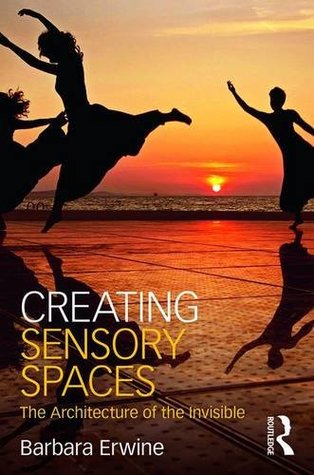Read Creating Sensory Spaces: The Architecture of the Invisible - Barbara Erwine | PDF
Related searches:
Creating Sensory Spaces: The Architecture of the Invisible - 1st Editi
Creating Sensory Spaces: The Architecture of the - Amazon.com
Creating Sensory Spaces - The Architecture - Architectura & Natura
Creating Sensory Spaces: The Architecture of the Invisible Request
Creating Sensory Spaces: The Architecture of the Invisible RIBA
CREATING SENSORY SPACES The Architecture of the Invisible
Creating Sensory Spaces: The Architecture of the Invisible - Bookshop
Amazon.com: Creating Sensory Spaces: The Architecture of the
Creating Sensory Spaces in the Classroom
Creating sensory spaces : the architecture of the invisible
Creating Sensory Spaces: The Architecture of the Invisible: Amazon
Buy Creating Sensory Spaces: The Architecture of the Invisible Book
Creating a sensory space for focused studying creating a space for students to truly focus without distraction is difficult, but there are tools and tips to use when trying to make a focus-oriented sensory space. Regardless of age and learning style, the calming effect of a well-planned focus space can make a positive impact on concentration.
A sensory design method reclaims the role of the body and all the senses in creating memorable experiences of place and belonging (erwine, 2017).
Unlock secrets of the senses lennie latham has worked with children with sensory issues for more than 15 years without seeing a state-of-the-art.
Creating sensory spaces celebrates spaces enlivened with sensual richness and provides you with the knowledge and tools necessary to create them.
In this architectural study, fully equipped modular units create self-contained sanctuaries – while requiring no more space than conventional cubicle solutions.
Creating sensory spaces celebrates spaces enlivened with sensual richness and provides you with the knowledge and tools necessary to create them. Drawing on numerous built case studies in ten countries and illustrated with over 85 full color images, the book presents a new framework for the design of sensory spaces including light, color, temperature, smell, sound, and touch.
If you’re looking to create your own sensory spaces like our messy wall, scheduling wall, and sensory retreat, do not feel restricted by our process. You know your child best, so individualize your creations to what best suits their needs. Now, if you’d like to see our process for creating our sensory spaces, check out our youtube video.
Create a sensory box that is filled with fidgets and calm down tools. If you have limited space to devote to a sensory area: make a sensory corner in your classroom, playroom, child’s room, basement, or living room.
Given the physical nature of the built environment, it would be easy to assume that the visual qualities of spaces dominate our our perception of a building. However, many artists and architects have experimented with specific sensory devices over the years, proving that every sense can be significant in transforming the experiential qualities.
Gap lighting would be delighted to help you in creating a colourful lighting scheme for your sensory space.
Creating a sensory space in your home is a great way to encourage your loved one to explore their senses and develop coping strategies in a place where they feel comfortable and safe. At home, they are relaxed and can make better progress confronting and working through sensory issues.
Drawing on numerous built case studies in ten countries and illustrated with over 85 full color images, the book presents a new framework for the design of sensory.
Nasis books store creating sensory spaces the architecture of the invisible creating sensory spaces celebrates spaces enlivened with sensual.
By creating sensory spaces, teachers provide students with autism a safe, positive and acceptable space in the classroom to relax, control their sensory systems and preserve their emotional stability for focused learning.
A sensory room is a room or space in your home that you create for your sensory kiddo that is designed by you for your kiddo to meet your sensory kiddos needs. It is best if you talk to your child's ot to design the room that is just right for your kiddo as all sensory kiddos have different needs from severe to mild and all sensory kiddos have.
A sensory room, such as snoezelen® rooms, can have high-tech lighting and fiber optics, projectors, water beds, bubble tubes, and wall panels. The purpose of these sensory rooms is to provide a relaxed atmosphere where the person is surrounded by pleasant sensations (unique tactile experiences, relaxing aromas, interesting light effects).
Built environment professionals have a responsibility to create environments that enhance the building user's experience, and that responsibility is to every.
A sensory room (also known as snoezelen rooms) can have high-tech lighting and fiber optics, projectors, water beds, bubble tubes and wall panels. The purpose of these rooms is to provide a relaxed atmosphere where the person is surrounded by pleasant sensations (unique tactile experiences, relaxing aromas, interesting light effects).

Post Your Comments: